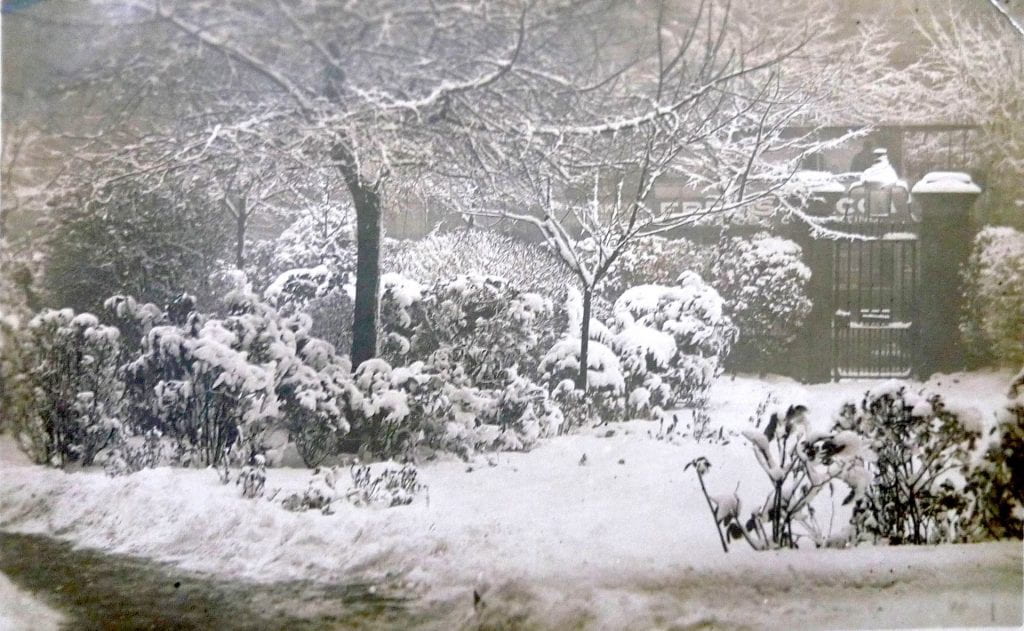
This remarkable postcard of a tram travelling past the snow-covered front of Goldsmiths’ College in Lewisham Way just before Christmas 1908 was in an album donated to the University’s archives by Meg Rayner, née Hinwood, in 1968. She had been a student at Goldsmiths between 1907 and 1909. The outline of the tram with an advert on its side can be seen towards the right of the picture as it travels past the iron side gate. Image: Goldsmiths Archives. All rights reserved.
Introducing Meg Hinwood
This is the story of a working-class girl from Dover who exceeded her wildest dreams at the beginning of the 20th century of being able to go to University to train to be a teacher.
In her excitement and joy when studying in London for two years and embarking on a future career as a professional young woman Meg would continually buy postcards depicting life and scenes during her Goldsmiths’ College life.
These would be produced by a resident College photographer called Mr Wilkinson.
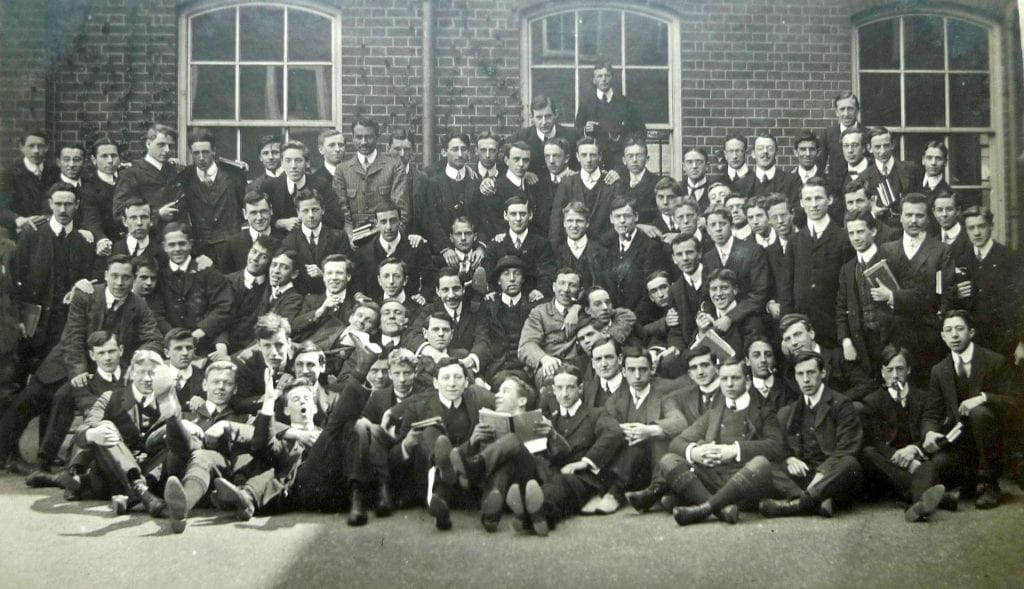
An impromptu, informal and popular image of male senior and junior students getting together raucously to pull faces and make gestures in front of the College’s photographer in 1909. Standing at the back is the tall figure of one of the two Egyptian students holding four books during a break between lectures. There was gender segregation during the early 20th century with men’s and women’s entrances and corridors and separate follow-up assemblies and College Vice-Principals. Image: Goldsmiths Archives. All rights reserved.
Meg would write notes on the back with her latest news and post them to her mother with instructions to put them in an album.
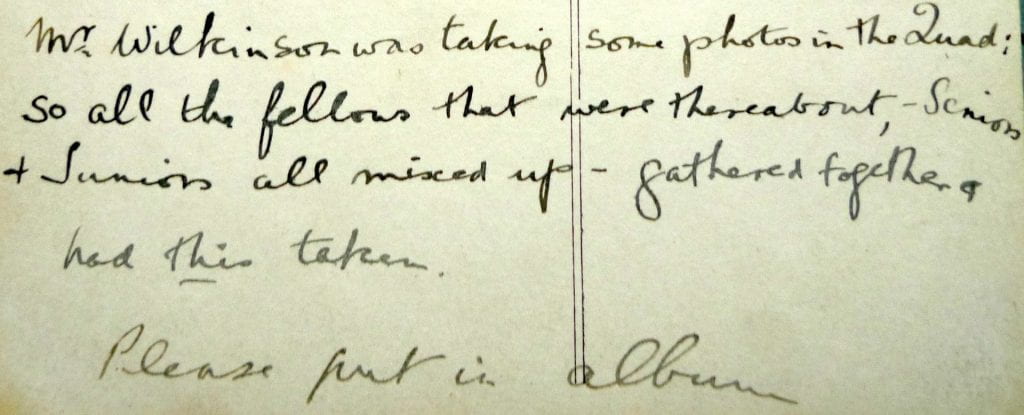
Meg Hinwood writing a note to her mother on the back of the ‘fellows in the quad’ picture of Senior and Junior male students taken by Mr Wilkinson, the College photographer. Image: Goldsmiths Archives. All rights reserved.
This was the early 20th century medium of email or Instagram.
A social news picture and text message.
Though at this time it needed a stamp bearing the portrait of King Edward VII and the auspices of the Post Office to carry it to its destination.
Meg was at University during a crucial period in the social history of Britain.
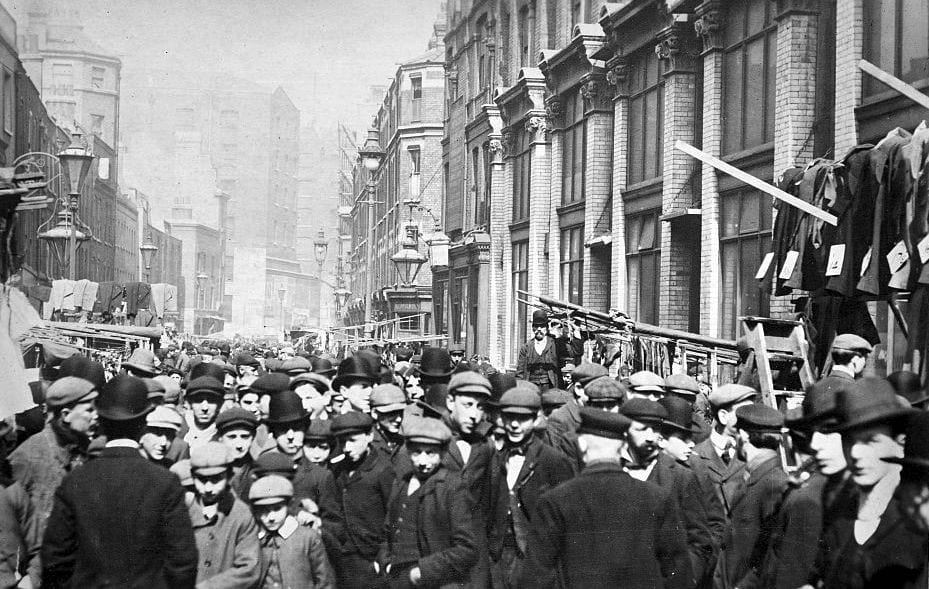
The London Meg Hinwood chose to study in between 1907-9 was the biggest and richest metropolis in the world, but New Cross and Deptford were mainly working-class with much over-crowding, poverty and child mortality. Around seven million people lived and worked in London. The Jewish community was the largest immigrant group. Chinese and Indian immigrants became more prominent and established, and a small but significant African and Black Caribbean community continued to prosper. The Pan-African Conference had been held in London in 1900 and this was a sign of the capital becoming an important centre of counter-imperial political activism. The 1901 census recorded 33,000 Londoners as having been born in the British colonies or dependencies. This is a crowded scene in Petticoat Lane market around 1909. Image: George Bain news agency, US Library of Congress. Public domain.
Suffragettes were taking direct action in the campaign to win the right to vote.
London was the capital of an imperialist world power boasting that it controlled one fifth of the world’s surface with racist subjugation of many other countries and peoples.
This was an age when the working classes were beginning to organise for better pay and conditions through trade unions, and Parliament through Liberal governments were laying the foundations of a Welfare state.
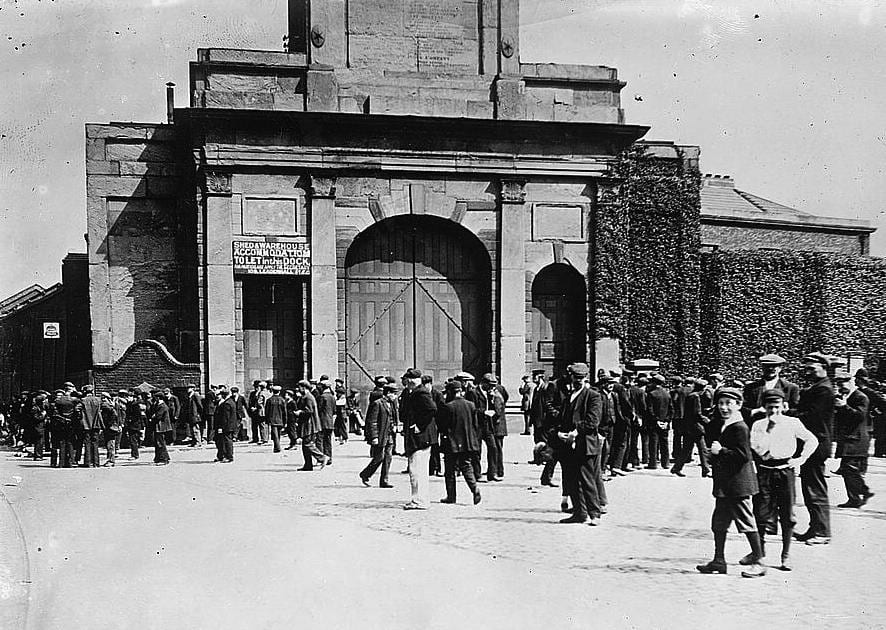
The Edwardian period was attended by growing industrial unrest as trade unions began to organise Labour to improve pay and conditions. This is the entrance to the Great East India Dock during a strike circa 1910. Image: George Bain news agency, US Library of Congress. Public domain.
A disadvantaged and Working Class Background
Meg (Marguérite) Hinwood was brought up in her grandparents’ home in Dover by her widowed mother.
Her father, William Hinwood, was only 27 years old when he died in 1889- just two years after she had been born.
She was too young to properly remember him.
He had been an accountant’s clerk and Meg and her mother Anne had been devastated by what the local newspaper described as his ‘deeply regretted death.’
They had to leave their life in Malmesbury Wiltshire to move in with Anne’s parents in Dover.
Meg was brought up in the terraced house at number 30 Clarendon Road overlooking the port and only a few streets away from Dover Priory railway station. They called their home ‘Fern Bank.’
The house is still standing in this residential part of the town.
Read More »